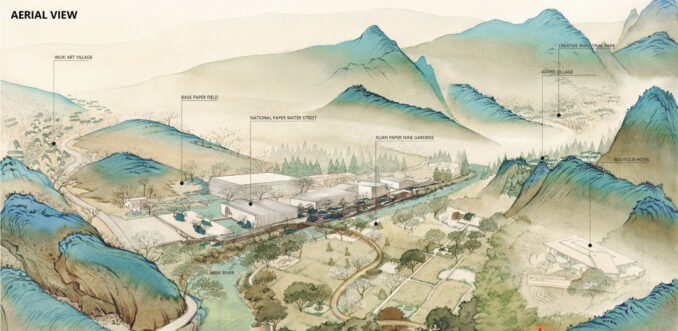
Activating the Xuan Paper Culture proposal explores a new mode of inheritance and activation of intangible cultural heritage (Xuan paper-making craft): the planning and designing characteristic towns led by landscape architecture. In terms of industry, this plan focuses on the extension and transformation of the Xuan paper craft to the traditional calligraphy and painting art, cultural and creative industry, and tourism industry to enrich the life characteristics of the town. In terms of space, the art of Chinese classical landscape painting is used for reference, and the existing landscape resources related to Xuan paper production are used as clues to highlight the landscape characteristics of the town.
The production of Xuan paper in China has a history of more than 1,500 years, and it is an important carrier of traditional Chinese calligraphy and painting and Chinese civilization. In 2009, the traditional production process of Xuan paper in Jingxian County was listed as an Intangible Cultural Heritage of Humanity by UNESCO. The production process of Xuan paper comes from the integration of the natural landscape and the wisdom of ancestors, which is deeply imprinted in the place where Xuan paper has been produced for thousands of years.
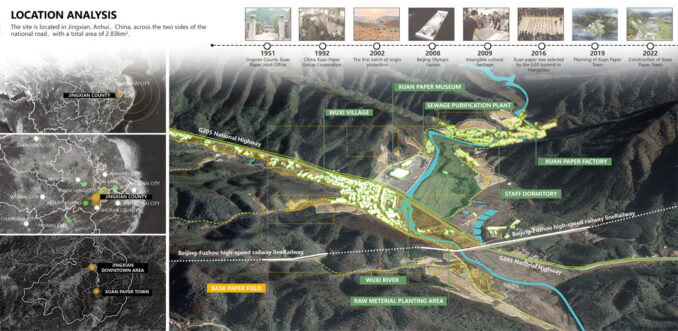
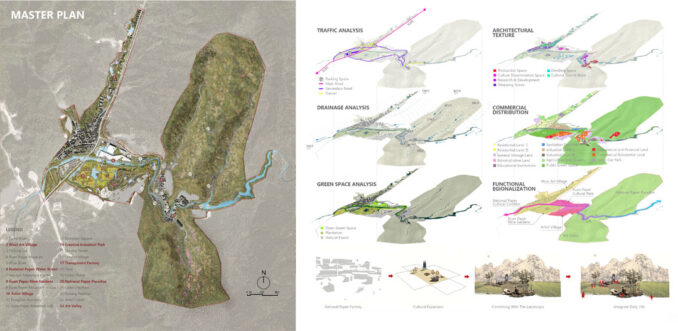
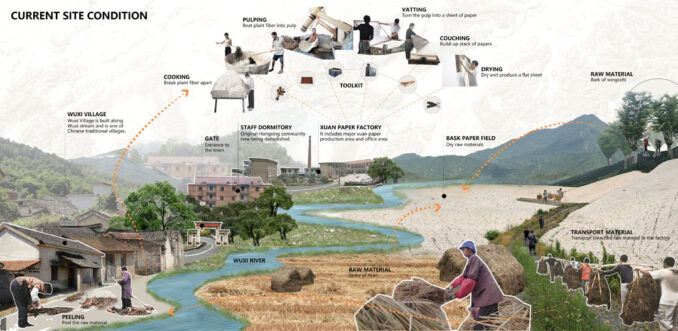
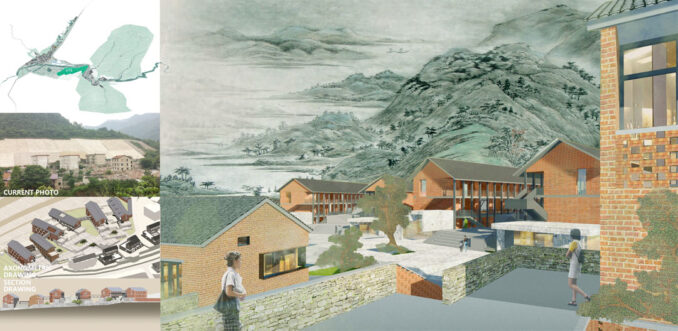
The site is in the suburbs of Jingxian County, backed by mountains and forests in the east, north and south, Jingxian Xuan Paper Factory in the east, and Wuxi Village in the west. Wuxi Stream originates from the upper mountainous area and flows through green sandalwood forest (paper-making raw material), paddy fields (paper-making raw material), and the hillside of the ancient method of drying paper to Wuxi Village downstream, the total area of the site is about 2.83 square kilometres. In 2018, Jingxian County Xuan Paper Factory accounted for 75% of the national Xuan Paper output, but outside the prosperous factories are declining villages and towns, and the single production of Xuan paper cannot drive the development of villages and towns. This is something that planning needs to address.
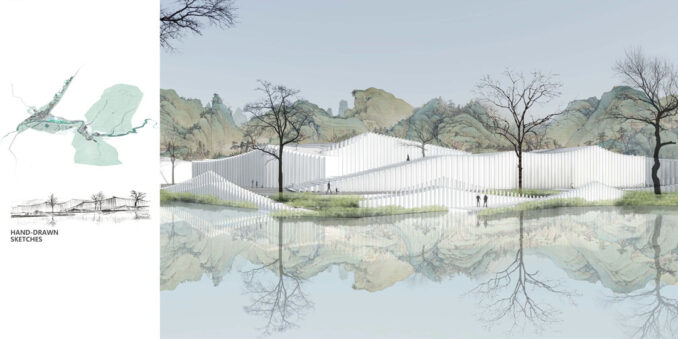
The planning strategy is to rely on the natural landscape, activate the “Xuan Paper Craft” (intangible cultural heritage), and integrate and transform the Xuan Paper Factory and Wuxi Village into a modern art town featuring Xuan paper culture. The vision is to integrate the production and display of Xuan paper skills, the creation and exchange of calligraphy and painting art, and the education and experience of Confucian culture, bringing together Xuan paper producers, art creators and tourists to create a cultural destination suitable for living, working and travelling.
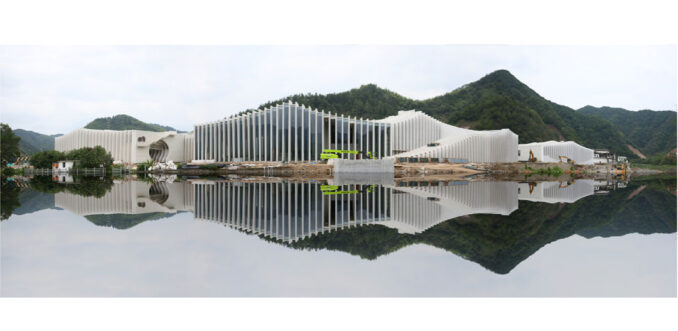
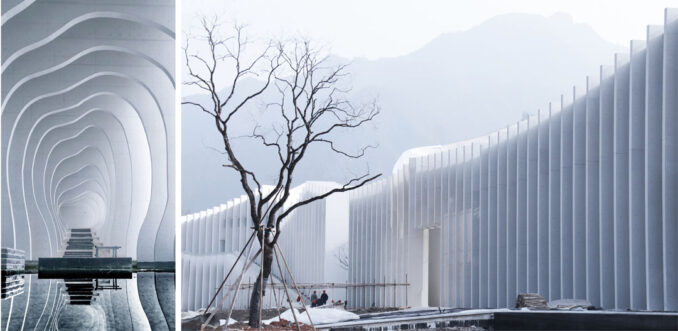
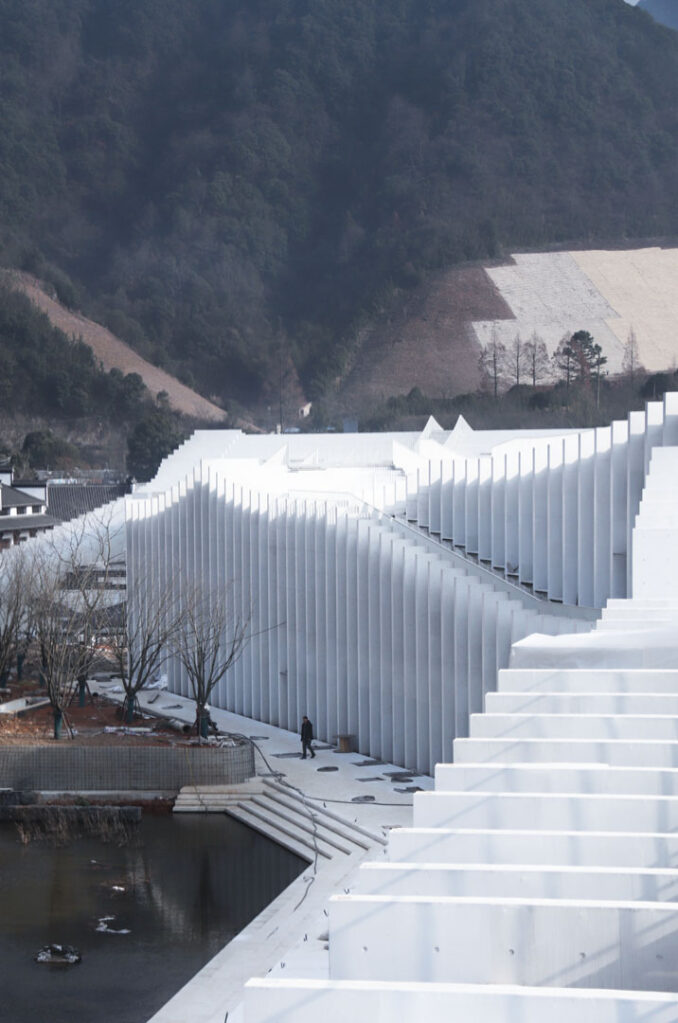
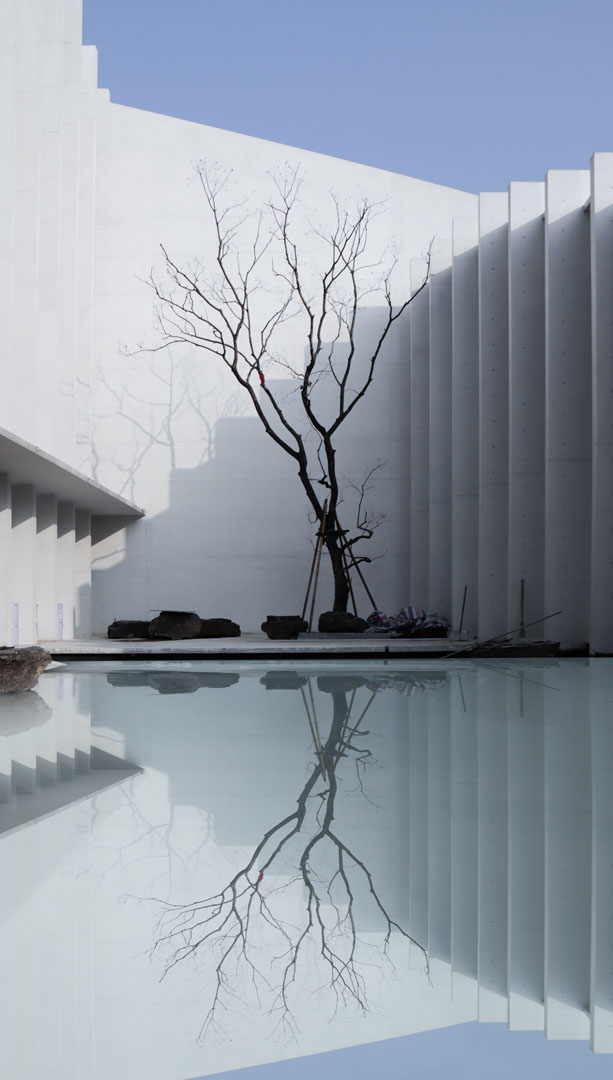
The feature of the plan is to draw on the traditional Chinese landscape painting “Traveling amid Mountains and Streams” for spatial layout and landscape construction and to plan and design Wuxi Art Village, Xuan Paper Nine Gardens, National Paper Water Street, Artist Village, Creative Industry Park, and Art Valley. The Wuxi River, formed by the convergence of acid-alkaline streams, green sandalwood forest, kiwifruit forest, and rice fields, are the raw materials for making Xuan paper. The planning preserves and strengthens these landscape elements and increases human experience and interaction.
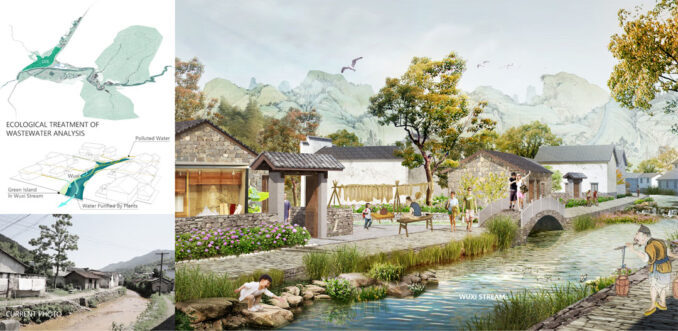
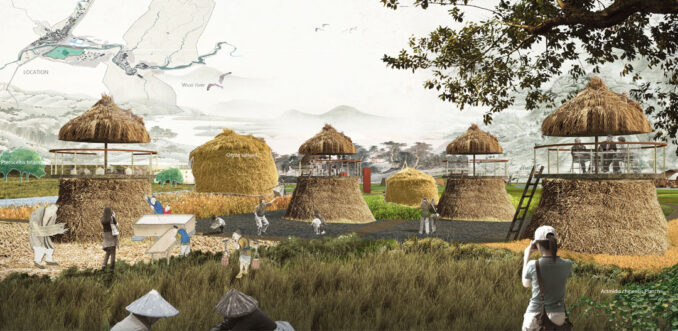
This plan is being gradually implemented, and the reconstruction of Wuxi Village and the construction of National Paper Water Street have been preliminarily completed.
Activating the Xuan Paper Culture by Landscape Planning and Design
Location: Jingxian County, Anhui, China
Designer Credit: China Academy of Art/ The Design Institute of Landscape & Architecture China Academy of Art Co.,Ltd./China Academy of Art Creative Industry Development Co.,Ltd.
Client: Anhui Jingxian Xuan Paper Town Co., Ltd./China Xuan Paper Co.,Ltd.
Designers:
Shixian Shen, Lead Planner; Liujun Yuan, Lead Architect; Yang He, Lead Landscape Architect; Kefeng Sun, Architect; Chang Liu, Architect; Rui Li, Architect; Mingjian Huang, Architect;Yue Yu, Landscape Planner; Fang fang, Landscape Architect; Yari Jin, Landscape Planner; Qinmeng Yu, Landscape Architect; Xiaofeng Yang, Landscape Architect; Zhiqiang Wang, Landscape Architect; Xinming Wang, Public Art Designer;Di Huang, Landscape Architect; Shunzhi Ge, Landscape Architect; Jiaqi Shi, Landscape Architect.
Photographer: Sheng Yang
